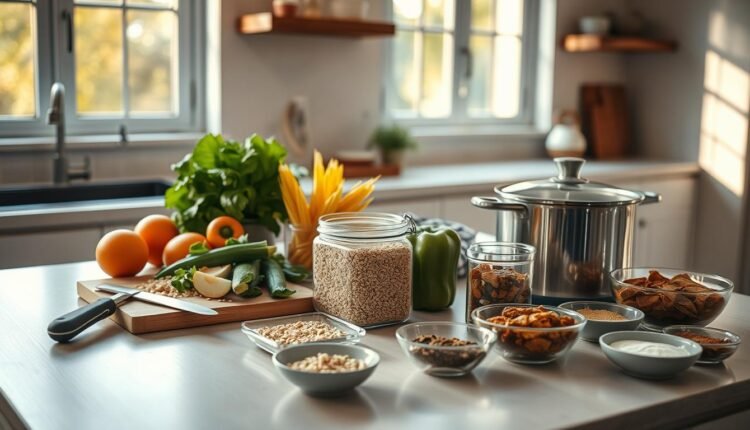Meal Prep For Work Batch Cooking Sunday Routine
Master meal prep for work batch cooking with our Sunday routine guide. Learn how to prep healthy meals in advance for a stress-free week ahead
What if Sundays could become your secret weapon against chaotic weeknights? As someone who’s navigated restaurant kitchens and family dinner dilemmas alike, I’ve found that strategic planning beats last-minute scrambling every time.
This approach centers on preparing versatile building blocks rather than fully assembled dishes. Roast colorful vegetables, cook grains in batches, and marinate proteins – these elements stay fresh for days and transform into countless combinations. I’ve seen clients reduce weekday cooking time by 70% using this method while keeping flavors exciting.
The magic lies in treating your kitchen like a workshop. Store components in clear containers, label everything, and keep a running list of what’s available. Need inspiration? My guide to healthy lunch combinations shows how to mix these staples creatively.
Key takeaways:
- Component-based preparation maintains freshness better than pre-made dishes
- Dedicated weekly planning sessions prevent daily decision fatigue
Understanding the Basics of Batch Cooking
Ever felt like your weekday dinners are stuck on repeat? Batch cooking flips the script by focusing on ingredient-building rather than rigid recipes. Think of it as stocking your kitchen with puzzle pieces you can assemble differently each day.
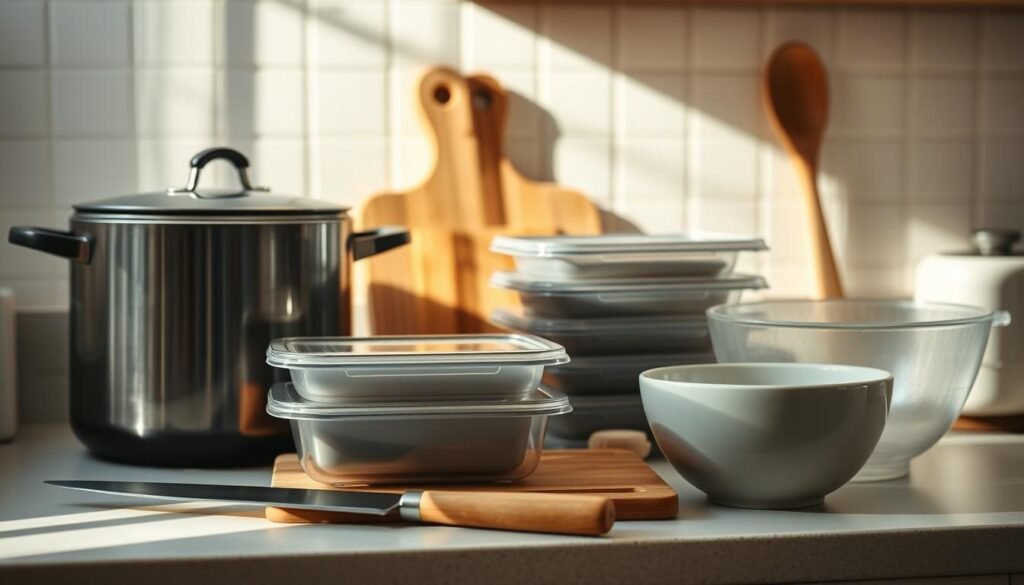
What Is Batch Cooking and Why It Works
Unlike traditional methods where you make complete dishes ahead, this approach prepares standalone items like quinoa, grilled chicken, or roasted bell peppers. I’ve seen this method keep ingredients fresher for 4-5 days compared to pre-portioned entrees that lose texture by Wednesday.
Here’s why it’s a game-changer:
- Customization: Spice chickpeas with cumin for Monday’s grain bowl, then toss them in curry powder for Tuesday’s wraps
- Time efficiency: Roast three sheet pans of veggies while grains simmer – multitasking cuts active kitchen time by half
- Reduced waste: Leftover lentils become tomorrow’s soup base instead of forgotten fridge casualties
Benefits of Cooking in Batches for a Busy Week
A client recently shared how this system helped her avoid 7pm cereal dinners. By cooking components separately, she creates varied combinations that feel new each night. Her kids? They love “building their own plates” from the mix-and-match options.
Need proof it works? My go-to guide to weekly nourishment breaks down strategies for building balanced plates without monotony. The secret lies in treating your fridge like a well-stocked pantry – ready for whatever the week throws your way.
Batch cooking can transform your week, reducing daily cooking time and offering flexibility without compromising flavor.
Meal Prep for Work Batch Cooking: A Strategic Approach
Ever opened your fridge midweek to find wilted greens and mushy leftovers? Let’s fix that. Seasonal ingredients are your ticket to vibrant, budget-friendly meals that stay exciting all week. I recently helped a client cut her grocery bill by 30% using this method – her secret? Letting the farmer’s market guide her menu.

Planning Your Menu with Seasonal Ingredients
Start by choosing one star seasonal item – like summer zucchini or fall squash. These become your flavor anchors. Roast a big batch with olive oil and garlic, then watch them transform. Monday’s pasta gets roasted slices. Tuesday’s tacos? Sautéed strips with chili powder.
Local produce stays fresher longer, which means less waste. My rule: Fill half your shopping cart with what’s in peak season. Not sure what’s growing near you? Check your state’s agricultural website – most list monthly harvest guides.
Mix & Match: Creating Versatile Meal Components
Cooked farro becomes tomorrow’s salad base or soup thickener. Marinated tofu cubes work in stir-fries or grain bowls. I keep six core components ready:
- Roasted seasonal veggies
- Pre-cooked whole grains
- Marinated proteins
- Washed greens
- Flavor-packed sauces
- Crunchy toppings
Need inspiration? Try my zesty combinations that turn basic ingredients into exciting lunches. The magic happens when you add fresh herbs or a squeeze of citrus right before eating – simple touches that make each dish feel new.
Essential Tools and Equipment for Efficiency
The right kitchen gear transforms chaotic Sundays into smooth prep sessions. Through trial and error in my own kitchen, I’ve identified tools that multiply effort without adding complexity.

Kitchen Workhorses Worth Owning
Start with quarter-sheet pans – their compact size fits multiple racks in your oven. A client recently roasted sweet potatoes, Brussels sprouts, and chicken simultaneously using three pans. Instant Pots shine for hands-off grains and beans, while food processors turn bulk veggie chopping into a 5-minute task.
- Large sauté pans: Cook double batches of stir-fries or sauces without overcrowding
- Quality knives: Dull blades slow you down and increase injury risks
- Nesting bowls: Streamline mixing marinated proteins or tossing salads
Containers That Keep Ingredients Pristine
Storage choices impact freshness more than people realize. Glass containers with locking lids prevent tomato sauce stains and survive dishwasher cycles. Stainless steel boxes excel for acidic foods but can’t go in microwaves.
| Type | Best For | Considerations |
|---|---|---|
| Plastic | Lightweight lunches | May stain over time |
| Glass | Reheating & visibility | Heavier to transport |
| Steel | Durability | Not microwave-safe |
Invest in uniform sizes for fridge stacking. One client cut container hunt time by 50% after standardizing her set.
Remember: good gear pays for itself in saved time and reduced food waste.
Ensure you’re using proper kitchen tools. A dull knife or overcrowded pan can slow down your prep time significantly.
Designing a Sunday Routine That Sets You Up for Success
Does your Sunday feel like a countdown to Monday madness? After coaching dozens of families through this transition, I’ve learned successful planning starts with rhythm over rigidity. Take inspiration from Denver-based nutritionist Lara Parker, who preps lunches for her twin toddlers while managing client appointments: “I treat Sundays like a relay race – handoffs between tasks keep momentum going.”
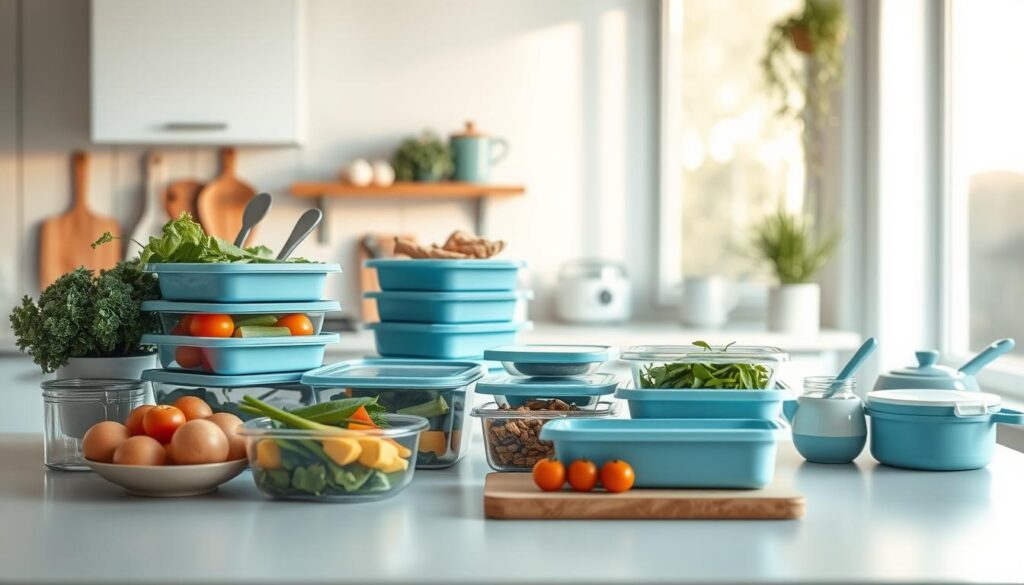
Time-Saving Tips and Scheduling Your Prep
Break your day into 30-minute power sessions. One client swears by this sequence:
- Order groceries online Friday night
- Wipe fridge shelves Saturday after dinner
- Sunday AM: Chop sturdy veggies (carrots, celery)
- Sunday PM: Roast proteins & grains
Short bursts prevent burnout. “I prep during soccer practice breaks,” shares dad-of-three Miguel Santos. “Two 15-minute sessions yield roasted broccoli and marinated chicken thighs.”
Smart Strategies to Balance Cooking and Cleanup
Keep a dishpan filled with soapy water while working. Toss utensils in as you go – this simple hack saved me 12 minutes per session. Sheet pan meals shine here: line pans with foil for zero scrubbing.
Organize components like a grocery store aisle:
| Category | Storage Tip | Grab-and-Go Use |
|---|---|---|
| Proteins | Top shelf | Salads, wraps |
| Grains | Left side | Bowl bases |
| Veggies | Clear bins | Stir-fry starters |
Chicago meal coach Jenna Wu reveals her secret: “I assign each family member a container to fill with their favorite components – eliminates midnight snack raids.”
Creative Techniques to Keep Your Meals Fresh and Tasty
Leftovers deserve better than soggy microwave revivals. Through years of testing, I’ve discovered how to make prepped components taste better on day three than day one. The secret? Treat your fridge like a backstage kitchen – ingredients wait in the wings, ready for their flavorful debut.
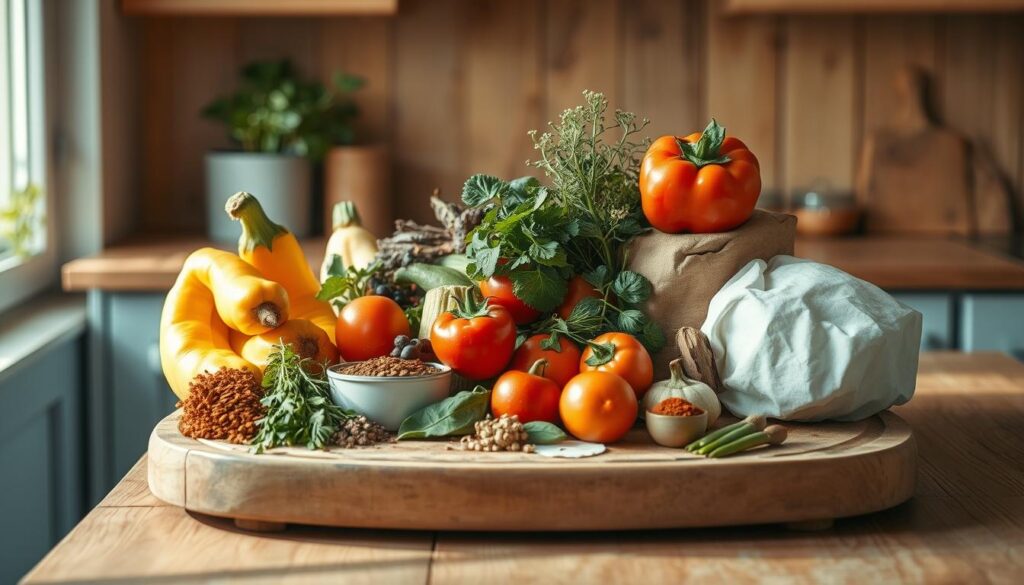
Reheating and Finishing Touches
Ditch the microwave for tools that restore texture. My air fryer transforms roasted veggies into crispy-edged delights in 4 minutes flat. For proteins, a hot cast iron skillet creates caramelized surfaces while keeping interiors juicy. Pro tip: Add a splash of broth when reheating grains to prevent dryness.
Final flourishes make all the difference:
- Toss warm components with fresh herbs or microgreens
- Squeeze citrus over proteins just before serving
- Layer crunchy toppings like toasted nuts separately
Reheating can alter texture. Use proper techniques to preserve the freshness and flavor of prepped ingredients.
Maximizing Flavor Through Smart Assembling
Store sauces and dressings in small containers – their bright acidity wakes up other ingredients. One client’s genius hack: Freeze herb oil cubes to drizzle over reheated dishes. For grain bowls, keep components divided until assembly time to maintain distinct textures.
Need inspiration? My assembly line approach works equally well for lunches. Remember: The magic happens when cold meets hot, crisp meets tender, and planned meets spontaneous. Your future self will thank you for that extra spritz of lime.
Improperly storing or handling proteins can lead to contamination. Always store at the right temperature to ensure food safety.
Imagine walking into your kitchen knowing exactly how to fuel your week. Through years of testing (and occasional burnt grains), I’ve seen how smart planning creates space for creativity – not chaos. The secret? Treating your fridge like a toolkit, not a museum for leftovers.
Start small. Roast one tray of veggies. Cook extra quinoa. These components become building blocks for endless combinations. Remember: success lies in systems, not perfection. One client transformed her evenings by dedicating 90 minutes weekly – now she reclaims 45 minutes nightly.
Key strategies to carry forward:
- Prioritize versatile ingredients that adapt to multiple dishes
- Invest in quality containers that simplify grab-and-go mornings
- Design Sunday sessions around your schedule – even 20-minute bursts count
Your journey begins where rigid rules end. Swap ingredients freely. Experiment with flavors. The goal isn’t Instagram-worthy containers – it’s sustainable no-stress nourishment. Share your wins (and “learning moments”) with our community at Prepistry.com. Together, we’ll turn kitchen routines into lifelong rhythms.
Rainbow Power Bowl Components
A collection of make-ahead building blocks for vibrant grain bowls all week. Roasted veggies, marinated proteins, and zesty sauces combine differently each day for fresh flavors without the fuss.
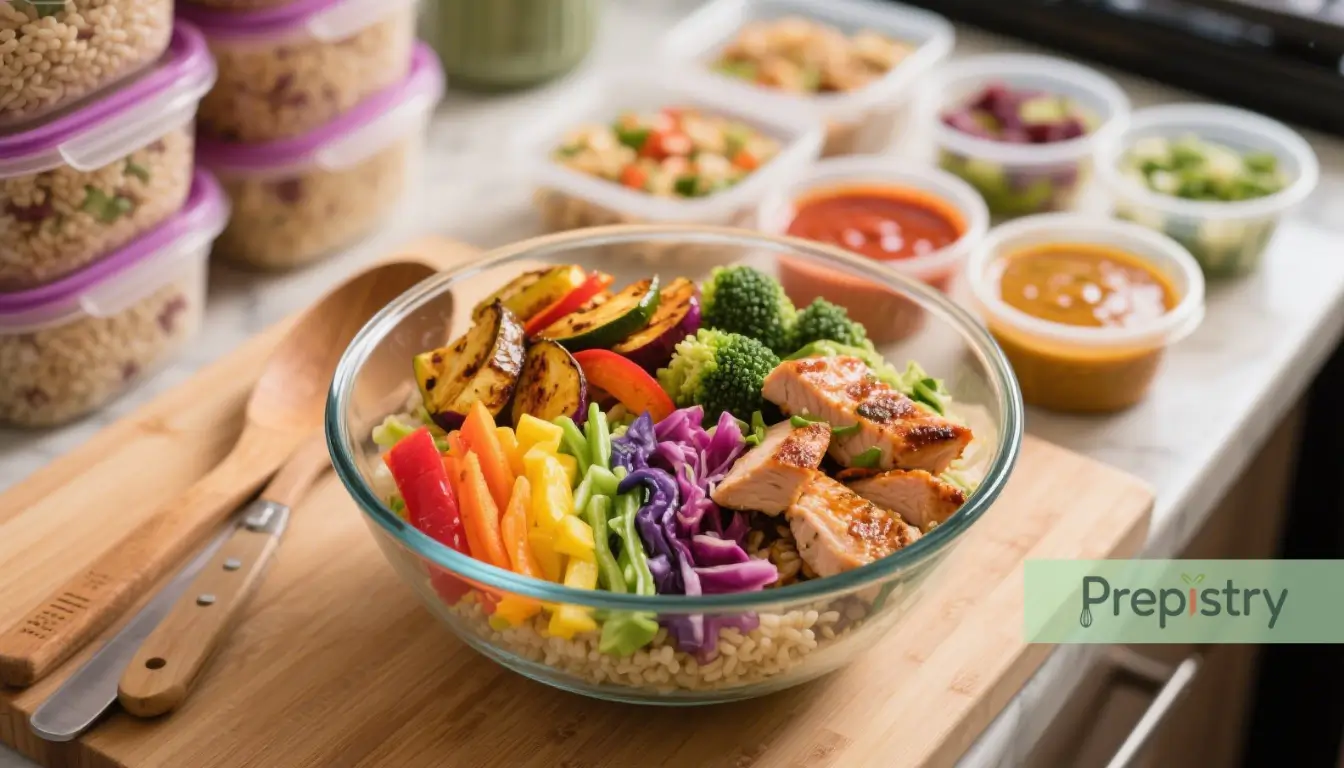
Nutrition Information
Equipment Needed
- Sheet pans
- Large pot
- Mixing bowls
- Glass storage containers
Ingredients
-
2 cups tri-color quinoa, uncooked
-
1 lb rainbow carrots, sliced diagonally
-
2 red bell peppers, julienned
-
1 bunch broccolini, trimmed
-
1.5 cups cooked chickpeas
-
3 tbsp olive oil, divided
-
2 tbsp lemon-tahini dressing
-
2 tbsp miso-ginger sauce
-
1/4 cup toasted almonds
-
1 tsp smoked paprika
-
1/2 tsp garlic powder
-
Sea salt and pepper to taste
Instructions
Recipe Video
Healthy Rainbow Energy Bowl, Healthy Lunch Ideas
Healthy Rainbow Energy Bowl | Find how to make Healthy Lunch Ideas.

